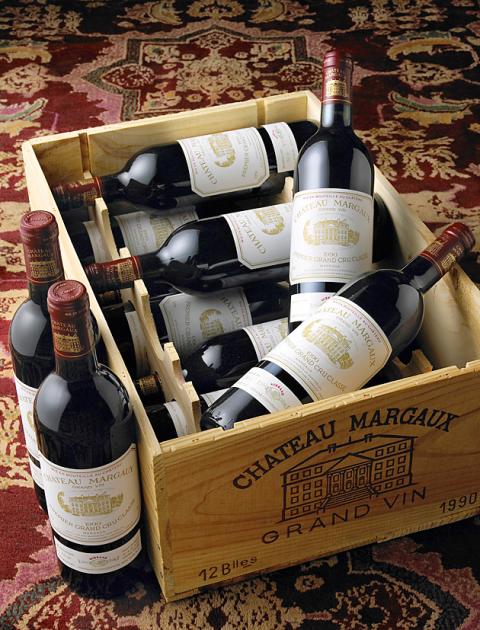Restaurant DN Innovacion is now accepting reservations for a special dinner on Feb. 29 that will pair wine from venerable French winery Chateau Margaux with dishes created by chef Daniel Negreira. This is the first time that Chateau Margaux has officially participated in a wine pairing dinner in Taiwan. Established as an estate in the 12th century, Chateau Margaux’s Bordeaux was one of four wines to achieve premier cru (first growth) ranking in the Bordeaux Wine Official Classification of 1855.
Chateau Margaux’s brand ambassador in Asia, Thibault Pontallier, has selected each vintage that will be served on Feb. 29 at DN Innovacion. The wine list represents the best the estate has to offer and includes Chateau Margaux from 1990, 1995 and 2000, and a 2009 Pavillon de Margaux Blanc (a dry white wine). Dishes by Negreira will be designed to complement the flavor of each wine.
The menu, which blends traditional Spanish cuisine and molecular gastronomy cooking techniques, includes dishes like Boston lobster ceviche with “jewelry,” French white asparagus with Iberico bellota ham and extra virgin olive oil caviar and Kobe beef short rib with eggplant truffle puree and baby peas.

Photo: Bloomberg
The price of the dinner is NT$18,888 per diner, plus a 10 percent service charge. For reservations call (02) 8780-1155 or visit www.dn-asia.com.

On April 26, The Lancet published a letter from two doctors at Taichung-based China Medical University Hospital (CMUH) warning that “Taiwan’s Health Care System is on the Brink of Collapse.” The authors said that “Years of policy inaction and mismanagement of resources have led to the National Health Insurance system operating under unsustainable conditions.” The pushback was immediate. Errors in the paper were quickly identified and publicized, to discredit the authors (the hospital apologized). CNA reported that CMUH said the letter described Taiwan in 2021 as having 62 nurses per 10,000 people, when the correct number was 78 nurses per 10,000

As we live longer, our risk of cognitive impairment is increasing. How can we delay the onset of symptoms? Do we have to give up every indulgence or can small changes make a difference? We asked neurologists for tips on how to keep our brains healthy for life. TAKE CARE OF YOUR HEALTH “All of the sensible things that apply to bodily health apply to brain health,” says Suzanne O’Sullivan, a consultant in neurology at the National Hospital for Neurology and Neurosurgery in London, and the author of The Age of Diagnosis. “When you’re 20, you can get away with absolute

May 5 to May 11 What started out as friction between Taiwanese students at Taichung First High School and a Japanese head cook escalated dramatically over the first two weeks of May 1927. It began on April 30 when the cook’s wife knew that lotus starch used in that night’s dinner had rat feces in it, but failed to inform staff until the meal was already prepared. The students believed that her silence was intentional, and filed a complaint. The school’s Japanese administrators sided with the cook’s family, dismissing the students as troublemakers and clamping down on their freedoms — with

As Donald Trump’s executive order in March led to the shuttering of Voice of America (VOA) — the global broadcaster whose roots date back to the fight against Nazi propaganda — he quickly attracted support from figures not used to aligning themselves with any US administration. Trump had ordered the US Agency for Global Media, the federal agency that funds VOA and other groups promoting independent journalism overseas, to be “eliminated to the maximum extent consistent with applicable law.” The decision suddenly halted programming in 49 languages to more than 425 million people. In Moscow, Margarita Simonyan, the hardline editor-in-chief of the